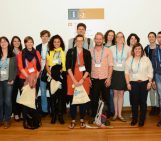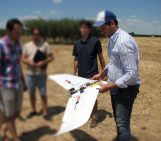
Editors of scientific journals play an important role in the process research publication. They act as the midpoint between authors and reviewers, and set the direction of a given journal. However, for an early career scientist like me (I only defended my PhD in early December 2016) the intricacies of editorial work remained somewhat mysterious. Many academic journals tend to appoint established, more senior scientists to these roles, and while most scientists interact with editors regularly their role is not commonly taught to more junior researchers. I was fortunate to get the chance to work, short term, as an associate editor at Nature Geoscience in the first 4 months of this year (2017). During that time, I learned a number of lessons about scientific publishing that I felt could be valuable to the community at large.
What does an editor actually do?
The role of the editor is often hidden to readers; in both paywalled and open-access journals the notes and thoughts editors make on submitted manuscripts are generally kept private. One of the first things to appreciate is that editors judge whether a manuscript meets a set of editorial thresholds that would make it appropriate for the journal in question, rather than whether the study is correctly designed or the results are robust. I’d argue most editors are looking for a balance of an advance beyond existing literature and the level of interest a manuscript offers for their audience.
At each step of the publication process, from initial submission, through judging referee comments, to making a final decision, the editor is making a judgement whether the manuscript still meets those editorial thresholds.
The vast majority of the papers I got the chance to read were pretty fascinating, but since the journal I was working for is targeted at the whole Earth science community some of these were a bit too esoteric, and as such didn’t fit the thresholds we set to appeal to the journal audience.
I actually found judging papers on the basis of editorial thresholds refreshing – in our capacity as peer reviewers, most scientists are naturally sceptical of methodology and conclusions in other studies, but as an editor in most cases I was able to take the authors conclusions at face-value, and leave the critical assessment to referees.
That’s where the important difference lies; even though editors are generally scientists by training, since they are naturally not experts in every field that they receive papers from, it’s paramount to find reviewers who have the appropriate expertise and to ask them the right set of questions. In journals with academic editors, the editors may have more leeway to make critical comments, but impartiality is key.
Much of this may be already clear to many readers, but perhaps less so to more junior scientists. Many of the editorial decisions are somewhat subjective, like gauging the level of interest to a journal audience.
In the context of open access research journals, I think it’s worth asking whether the editorial decisions should also be made openly readable by authors and referees – this might aid potential authors in deciding how to pitch their articles to a given journal. This feeds into my next point – what are journals looking for?
By which metrics do journals judge studies?
The second big thing I picked up is that the amount of work does not always equate to a paper being appropriate for a given journal. Invariably, authors have clearly worked hard, and it’s often really tricky to explain to authors that their study is not a good fit for the journal you’re working for.
Speaking somewhat cynically, journals run for profit are interested in articles that can sell more copies or subscriptions. Since the audiences are primarily scientists, “scientific significance” will be a dominant consideration, but Nature and subsidiary journals also directly compare the mainstream media coverage of some of their articles with that of Science – that competition is important to their business.
Many other authors have discussed the relative merits of “prestige” journals (including Nobel prize winners – https://www.theguardian.com/science/2013/dec/09/nobel-winner-boycott-science-journals), and all I’ll add here is what strikes me most is that ‘number of grad student hours worked’ is often not related to those articles that would be of a broader interest to the more mainstream media. The majority of articles don’t attract media attention of course, but I’d also argue that “scientific significance” is not strongly linked to the amount of time that goes into each study.
In the long run, high quality science tends to ensure a strong readership of any journal, but in my experience as an editor the quality of science in submitted manuscripts tends to be universally strong – the scientific method is followed, conclusions are robust, but in some cases they’re just pitched at the wrong audience. I’d argue this is why some studies have found in meta-analysis that in the majority of cases, articles that are initially rejected are later accepted in journals of similar ‘prestige’ (Weller et al. 2001, Moore et al. 2017).
As such, it’s imperative that authors tailor their manuscripts to the appropriate audience. Editors from every journal are picking from the same pool of peer reviewers, and so the quality of reviews should also be consistent, which ultimately determines the robustness of a study; so to meet editorial thresholds, prospective authors should think about who is reading the journal.
It’s certainly a fine line to walk – studies that are confirmatory of prior work tend to attract fewer readers, and as such editors may be less inclined to take an interest, but these are nonetheless important for the scientific canon.
In my short time as an editor I certainly didn’t see a way around these problems, but it was eye-opening to see the gears of the publication system – the machine from within, as it were.
Who gets to review?
One of the most time-consuming jobs of an editor is finding referees for manuscripts. It generally takes as long, if not far longer, than reading the manuscript in detail!
The ideal set of referees should first have the required set of expertise to properly assess the paper in question, and then beyond that be representative of the field at large. Moreover, they need to have no conflict of interest with the authors of the paper. There are an awful lot of scientists working in the world at the moment, but in some sub-fields it can be pretty hard to find individuals who fit all these categories.
For example, some studies in smaller research fields with a large number of senior co-authors often unintentionally rule out vast swathes of their colleagues as referees, simply because they have collaborated extensively.
Ironically, working with everyone in your field leaves no-one left to review your work! I have no doubt that the vast majority of scientists would be able to referee a colleagues work impartially, but striving for truly impartial review should be an aim of an editor.
As mentioned above, finding referees who represent the field is also important. More senior scientists have a greater range of experience, but tend to have less time available to review, while junior researchers can often provide more in-depth reviews of specific aspects. Referees from a range of geographic locations help provide diversity of opinion, as well as a fair balance in terms of gender.
It was certainly informative to compare the diversity of authors with the diversity of the referees they recommended, who in general tend to be more male dominated and more US-centric than the authors themselves.
A positive way of looking at this might be that this represents a diversifying Earth science community; recommended referees tend to be more established scientists, so greater author diversity might represent a changing demographic. On the other hand, it’s certainly worth bearing in mind that since reviewing is increasingly becoming a metric by which scientists themselves are judged, recommending referees who are more diverse is a way of encouraging a more varied and open community.
What’s the job like?
Editorial work is definitely rewarding – I certainly felt part of the scientific process, and providing a service to authors and the readership community is the main remit of the job.
I got to read a lot of interesting science from a range of different places, and worked with some highly motivated people. It’s a steep learning curve, and tends to be consistently busy; papers are always coming in, so there’s always a need to keep working.
Perhaps I’m biased, but I’d also suggest that scientists could work as editors at almost any stage in their careers, and it offers a neat place between the world of academia and science communication, which I found fascinating.
By Robert Emberson, freelance science writer
References
Moore, S., Neylon, C., Eve, M. P., O’Donnell, D. P., and Pattinson, D. 2017. “Excellence R Us”: university research and the fetishisation of excellence. Palgrave Communications, 3, 16105
Weller A.C. 2001 Editorial Peer Review: Its Strengths and Weaknesses. Information Today: Medford NJ




